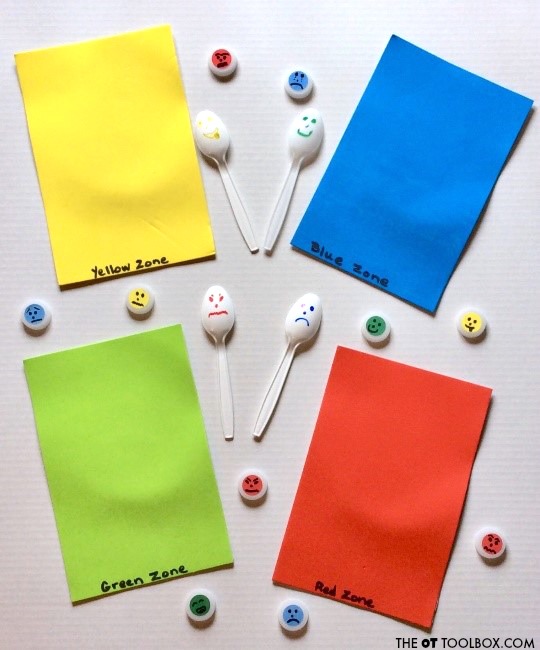Using the Zones of Regulation at Home
In these unusual times, it is even more important to think about emotional well-being and the ability to self-regulate. Children will be getting used to situations they have not had to deal with before and parents, more than ever, will need to support them through this.
Quick Reminder .......what are the Zones of Regulation?
The zones fosters Self-Regulation & Emotional Control. In school, this means helping our children to be 'ready to learn'. In all situations, we need to teach our kids GOOD coping and regulation strategies so they can help themselves when they become stressed, anxious, or sad.
Its about going from this.......... to this
to this 
What are the 4 Zones?

Activities to try at home.......
Activity 3 - Grab Bag Game
Draw emotional expressions on bottle tops or plastic spoons. Put them all into a bag together. When children take a cap or spoon from the bag, they can decide which coloured mat they belong on to identify the correct emotion and zone.
 Activity 2: Zones Check-in Tube
Activity 2: Zones Check-in Tube
Paint or wrap coloured tape around a tubes according to the zone colors and wait for it to dry. Follow up by writing emotion words or even drawing emotion facial expressions onto the matching tube color. Place a hair band onto the tube to roll up and down to show hoe you are feeling during the day.
 You could also try using lolly sticks to make a zones frame......
You could also try using lolly sticks to make a zones frame......
Activity 1: Fingertip Zones - use the four colours of the zones and make coloured fingerprints. Add some facial expressions showing different emotions for each colour.
Here is an example: Younger children will show simpler emotions but older children can try to show some more complicated emotions. Talk about the different emotions together and times when they might have experienced these. How did they deal with them?
Younger children will show simpler emotions but older children can try to show some more complicated emotions. Talk about the different emotions together and times when they might have experienced these. How did they deal with them?



